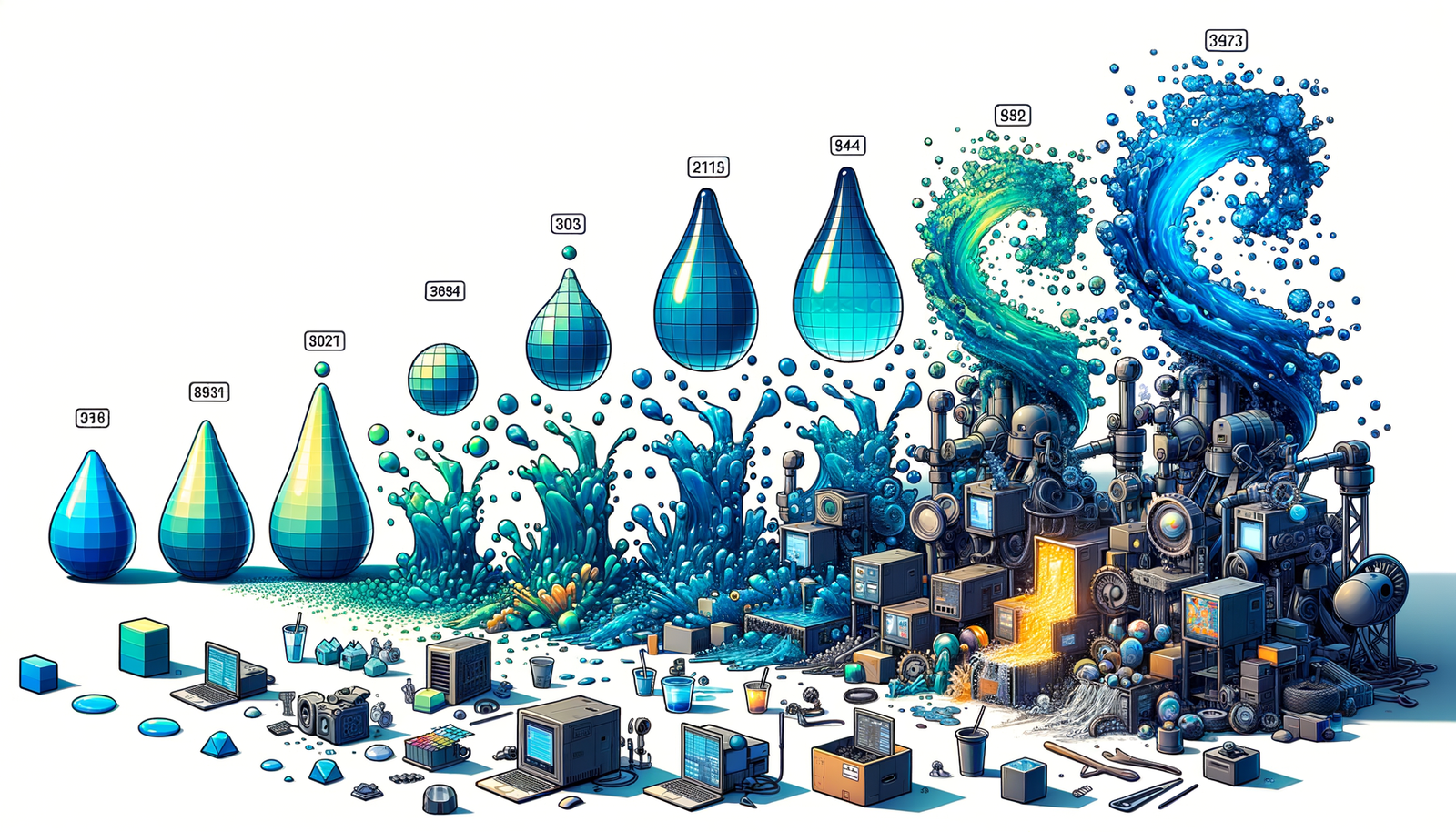Your Cart is Empty
Customer Testimonials
-
"Great customer service. The folks at Novedge were super helpful in navigating a somewhat complicated order including software upgrades and serial numbers in various stages of inactivity. They were friendly and helpful throughout the process.."
Ruben Ruckmark
"Quick & very helpful. We have been using Novedge for years and are very happy with their quick service when we need to make a purchase and excellent support resolving any issues."
Will Woodson
"Scott is the best. He reminds me about subscriptions dates, guides me in the correct direction for updates. He always responds promptly to me. He is literally the reason I continue to work with Novedge and will do so in the future."
Edward Mchugh
"Calvin Lok is “the man”. After my purchase of Sketchup 2021, he called me and provided step-by-step instructions to ease me through difficulties I was having with the setup of my new software."
Mike Borzage
Design Software History: The Evolution and Impact of RealFlow in Fluid and Dynamics Simulation for VFX
August 07, 2024 4 min read


The Story of RealFlow: Fluid and Dynamics Simulation for VFX
The history of design software is a fascinating journey of technological advancements and creative ingenuity. Among the numerous breakthroughs, RealFlow stands out as a transformative force in the realm of fluid and dynamics simulation for visual effects (VFX). This article dives into the genesis, technological innovations, industry impact, and future prospects of RealFlow, reflecting on its significant contributions to the VFX industry.
Introduction: The Genesis of RealFlow
Background on Fluid and Dynamics Simulation
The importance of fluid dynamics in visual effects cannot be overstated. From roaring oceans to cascading waterfalls, the realistic portrayal of fluid behavior is crucial in creating visually stunning and believable scenes. However, simulating realistic fluid behavior in computer graphics was a monumental challenge in the early days. The behaviors of fluids—such as flow, splash, and interaction with solid objects—are governed by complex physics that are computationally intensive to replicate.
Founding of RealFlow
The breakthrough came with the founding of Next Limit Technologies in Madrid, Spain, in 1998. Key founders, Victor Gonzalez and Iguácel González, envisioned a software solution that could address the complexities of fluid simulation with unparalleled accuracy and efficiency. Their vision culminated in the creation of RealFlow, a pioneering software that would revolutionize fluid dynamics simulation in the VFX industry.
Technological Innovations and Core Features
Simulation Algorithms
At the heart of RealFlow's success are its advanced simulation algorithms. One of the core techniques utilized by RealFlow is Smoothed Particle Hydrodynamics (SPH). SPH is a particle-based simulation method that represents fluids as a collection of particles, each carrying properties like mass, position, velocity, and pressure. This technique allows for highly detailed and realistic simulations of fluid behavior, including complex interactions and surface tension effects.
In addition to SPH, RealFlow employs other algorithms such as grid-based techniques and hybrid methods to handle a wide range of fluid dynamics scenarios. These algorithms provide a robust foundation for simulating everything from calm lakes to turbulent oceans with remarkable precision.
Integration with Other Software
A key strength of RealFlow is its seamless integration with popular 3D software applications, including Maya, 3ds Max, and Cinema 4D. RealFlow's compatibility with these industry-standard tools enables VFX artists to incorporate fluid simulations directly into their existing workflows, enhancing both efficiency and creative possibilities. This interoperability is facilitated through plugins and data exchange formats that ensure smooth communication between RealFlow and other 3D software.
Key Features and Tools
RealFlow boasts a comprehensive suite of features designed to tackle a wide range of fluid simulation challenges. Some of the standout features include:
- Hybrido: A hybrid grid-particle solver that excels at large-scale fluid simulations, such as oceans and floods.
- Caronte: A dynamics solver for rigid and soft body interactions, enhancing the realism of fluid-object interactions.
- RealWave: A specialized tool for generating realistic wave simulations on fluid surfaces.
The role of meshing, particle interaction, and scripting further enhances the capabilities of RealFlow. Meshing algorithms convert particle data into polygonal surfaces, creating detailed and visually appealing fluid surfaces. Particle interaction models simulate the behavior of fluids in contact with different materials, while scripting allows for custom behaviors and automation within simulations.
Impact on the VFX Industry
Early Adopters and Landmark Projects
RealFlow quickly gained traction among major studios and became a go-to tool for blockbuster movies. The software's ability to create stunningly realistic fluid effects made it indispensable for a wide range of VFX projects. From epic battles featuring vast bodies of water to intricate scenes requiring precise fluid interactions, RealFlow played a pivotal role in bringing these visions to life.
Advancements in Realism and Efficiency
The advent of RealFlow marked a significant leap in the realism and efficiency of fluid simulations. Prior to RealFlow, VFX artists often relied on hand-animated techniques or less sophisticated simulation tools that struggled to capture the nuances of fluid behavior. RealFlow's advanced algorithms and user-friendly interface set new standards for fluid dynamics simulation, enabling artists to achieve unprecedented levels of detail and realism in their work.
Comparing pre-RealFlow VFX with post-RealFlow VFX reveals a striking difference in quality. The software's ability to handle complex fluid interactions and generate highly detailed simulations has elevated the visual storytelling capabilities of filmmakers, resulting in more immersive and captivating cinematic experiences.
Future Prospects and Continuing Evolution
Recent Updates and New Features
RealFlow continues to evolve with the introduction of new features and capabilities. Recent versions of the software have incorporated cutting-edge technologies, such as GPU acceleration and machine learning enhancements, to further improve simulation speed and accuracy. These advancements enable VFX artists to tackle even more ambitious projects, pushing the boundaries of what is possible in fluid dynamics simulation.
Challenges and the Road Ahead
Despite its many advancements, fluid simulation remains a challenging field with ongoing hurdles to overcome. RealFlow's developers are constantly striving to address these challenges, such as improving simulation stability, handling extreme fluid behaviors, and optimizing performance for increasingly complex scenes. Looking ahead, RealFlow is poised to keep pace with future demands in VFX and other industries, including virtual reality and gaming, by leveraging emerging technologies and innovative approaches.
Community and Industry Influence
RealFlow has not only transformed fluid dynamics simulation but also fostered a vibrant community of VFX professionals and enthusiasts. The software's widespread adoption has led to numerous contributions to open-source projects and collaborations with academic research, further advancing the field of fluid simulation. RealFlow's influence extends beyond the VFX industry, inspiring new generations of artists and researchers to explore the possibilities of fluid dynamics in computer graphics.
Also in Design News

Rhino 3D Tip: TransformAgain: Repeat Exact Move/Rotate/Scale Transforms Across Objects
December 26, 2025 2 min read
Read More
Cinema 4D Tip: Connect Objects + Delete for clean, export-ready meshes
December 26, 2025 2 min read
Read More
Revit Tip: Revit Conceptual Mass Workflow: Setup, Parametrics, and Conversion
December 26, 2025 2 min read
Read MoreSubscribe
Sign up to get the latest on sales, new releases and more …


